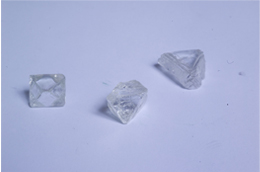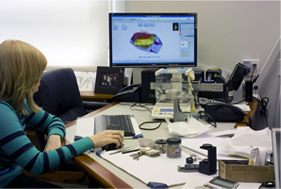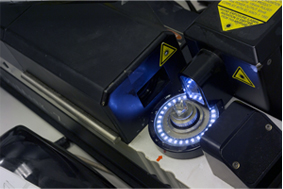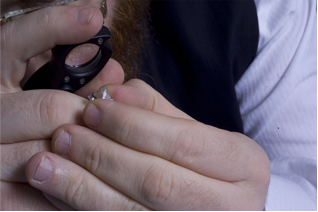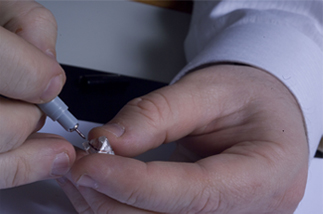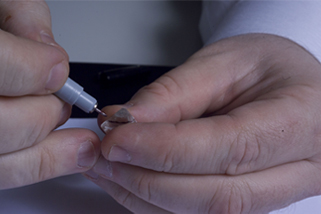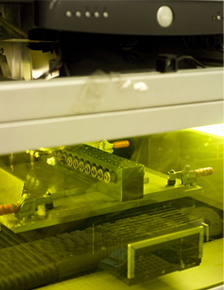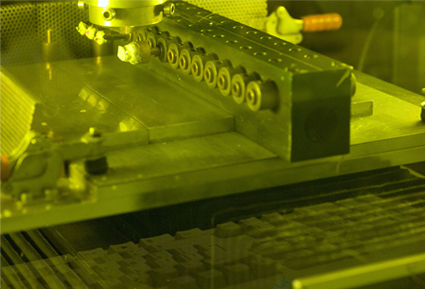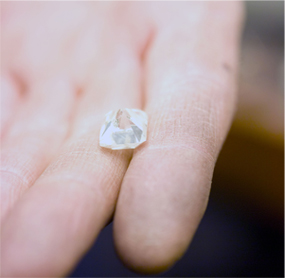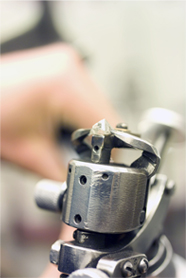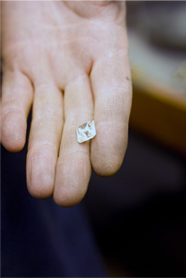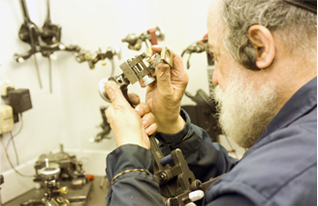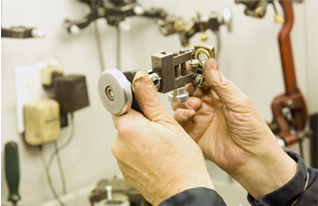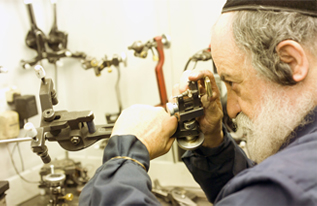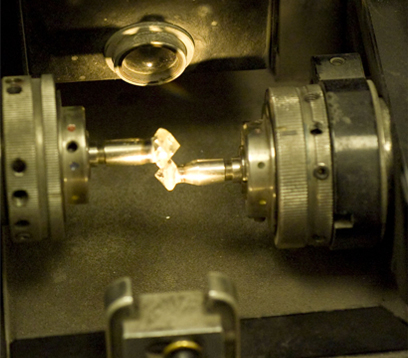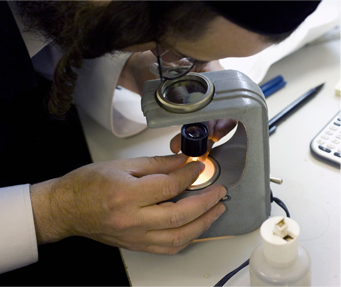Cutting Experience
The Journey Of The Diamond From Rough To Polished
The diamond is found naturally in the rough form. In the original crystal form it does not display its future luster.
The fire and brilliance of the diamond is only uncovered after the cutting and polishing process.
Rough

Mapping

Planning

Marking
Once the final shape is determined, the diamond is marked either with ink (the traditional method) or a laser to indicate where the diamond is to be sawn or divided.

Lazer Sawing

Blocking
This is the final stage in the making of a polished diamond. It is during this time that the diamond's facets are polished onto the stone. This is done using a horizontally mounted circular cast iron disc known as a scaife. The scaife has a surface of oil and diamond dust. The diamond to be polished is set in an adjustable dop at a certain angle and lowered onto the plate. The angle of the diamond must be changed for each facet. The first and perhaps most crucial polishing stage is blocking. This step lays the foundation for the potential of the diamond's performance because it establishes the diamond's basic symmetry. During the blocking stage, the first 17 or 18 facets are made, those facets being table, culet, and first eight facets on the crown and pavilion, creating what is known at this stage as a "single cut" diamond.

Shaping
Achieving the same result as girdling, the outline of a fancy shape diamond must be formed by hand, which is referred to as "shaping".

Girdling

Brillianteering

Scoping

11. Polishing




